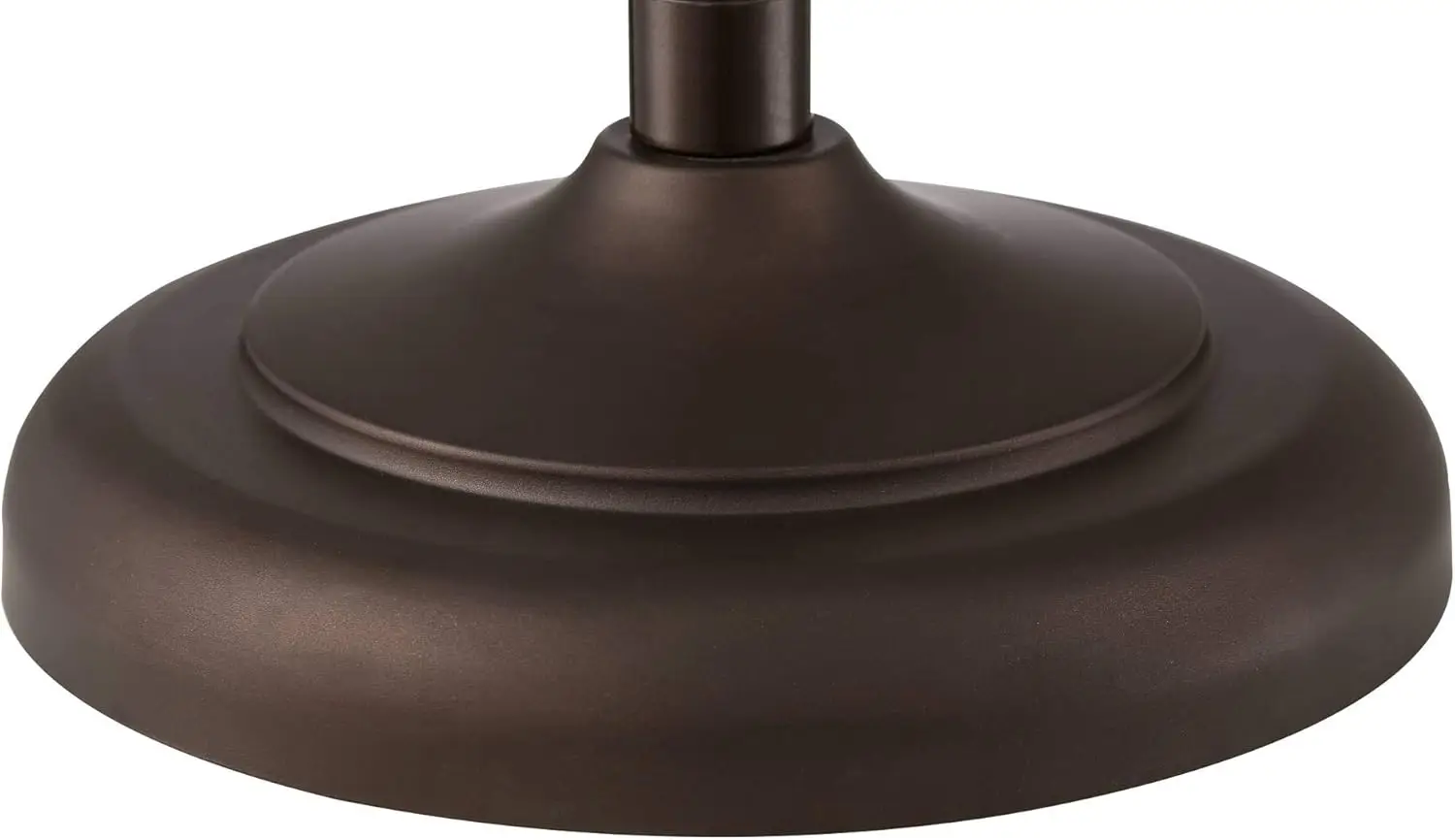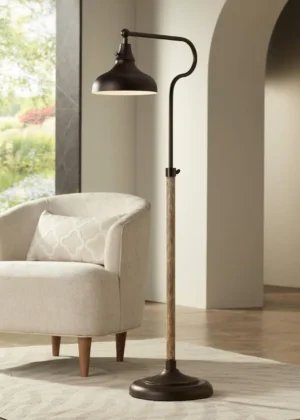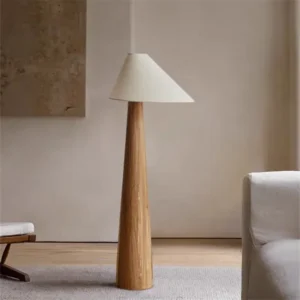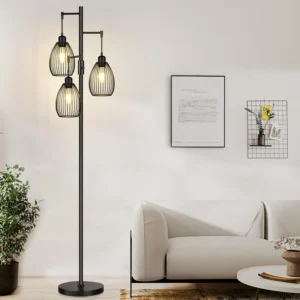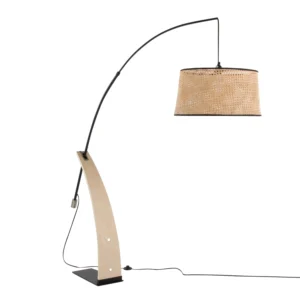Introduction: How Vintage Lamps Transform Living Spaces
Creating a truly cozy living room involves thoughtful consideration of many elements, but perhaps none is as transformative as lighting. The right lamp can completely change the mood of a space, turning a stark, uninviting room into a warm sanctuary that beckons you to relax and unwind. Vintage lamps, with their unique character and warm glow, are particularly effective at creating this inviting atmosphere.
What makes vintage lighting so special isn’t just their appearance, but the stories they carry. These pieces have stood the test of time, often crafted with materials and techniques that aren’t commonly used today. By choosing vintage lamps for your living space, you’re not only adding a distinctive design element but also embracing sustainability by giving new life to existing pieces rather than contributing to the demand for mass-produced items.
Proper lighting choices profoundly affect how we experience a room, influencing everything from our mood to how we perceive colors and textures. Research has consistently shown that warm lighting promotes relaxation and comfort, making vintage lamps—which often emit a softer, more amber light—perfect for creating that coveted cozy feeling.
- Vintage lamps create focal points that draw people together, enhancing the social aspect of living spaces
- Each vintage piece brings unique craftsmanship and character impossible to replicate in modern mass production
The Undeniable Charm of Vintage Lamps in Living Spaces
There’s something magical about the glow of a vintage lamp that modern lighting often fails to capture. Perhaps it’s the patina that develops on brass and copper bases over decades, telling the silent story of homes and hands that came before. Or maybe it’s the intricate detailing—hand-carved wooden elements, delicate filigree work on metal parts, or hand-painted glass shades—that speaks to a time when craftsmanship was paramount.
Vintage lamps were built to last, often featuring heavier, more substantial materials than their contemporary counterparts. Solid brass bases, genuine marble accents, and thick, hand-blown glass are common features that not only contribute to their durability but also to their distinct presence in a room. These quality materials develop character over time rather than deteriorating, making vintage lamps an investment that continues to reward for years to come.
Beyond their aesthetic appeal, choosing vintage lighting contributes to a more sustainable home. By repurposing existing pieces, you’re reducing the environmental impact associated with manufacturing new items. A single vintage floor lamp can prevent approximately 40-60 pounds of materials from entering landfills while eliminating the carbon footprint of producing a new one.
The versatility of vintage lamps is truly remarkable. Whether your living room features sleek, contemporary furniture or comfortable, traditional pieces, there’s a vintage lighting style that can complement and enhance the space. Mid-century vintage arc floor lamps can add a sophisticated touch to modern interiors, while ornate Victorian table lamps might be the perfect counterpoint to simpler furniture, creating a balanced eclectic look that feels curated rather than chaotic.
Popular Vintage Lamp Eras and Their Distinctive Features
Art Deco (1920s-1930s)
Art Deco lamps represent the height of glamour and modernity from the Roaring Twenties. These striking pieces feature bold geometric patterns, stepped designs, and a sense of movement through symmetrical, repeating elements. Materials like chrome, alabaster, and colored glass are common, often combined with exotic woods or Bakelite.
- Look for chevron patterns, sunburst motifs, and stylized natural forms
- Many feature female figurines (often called “statue lamps”) in dancing poses
- Colors tend toward high contrast—black and white, or vibrant jewel tones
Mid-Century Modern (1940s-1960s)
Mid-century lamps emphasize clean lines, organic shapes, and a perfect balance between form and function. These pieces work beautifully in contemporary spaces while adding a touch of vintage warmth. Vintage arc floor lamps from this era are particularly sought after for their elegant curves and space-age appeal.
- Materials include walnut and teak woods, brushed metals, and ceramic
- Shapes often mimic natural forms or employ geometric simplicity
- Colors range from neutrals to bold pops of turquoise, orange, and mustard
Mid-century arc floor lamps combine sculptural presence with practical functionality, making them particularly valuable in modern living spaces where they add both light and artistic interest.
Industrial (Late 19th-Early 20th Century)
Industrial vintage lamps celebrate utility and raw materials. Originally designed for factories, workshops, and commercial spaces, these sturdy pieces bring rugged character to living rooms, especially those with loft-like or rustic elements.
- Features exposed bulbs, metal shades, and adjustable components
- Materials include cast iron, steel, brass, and glass
- Often incorporates functional elements like pulleys, gears, or tension systems
Victorian & Tiffany Style
Victorian and Tiffany lamps represent the height of ornate craftsmanship, featuring intricate stained glass shades in nature-inspired patterns. These lamps cast colorful, patterned light that creates an unmatched cozy ambiance.
- Bases often feature ornately carved metal or heavy ceramic
- Shades incorporate hundreds of pieces of hand-cut glass in complex patterns
- Common motifs include dragonflies, flowers, and geometric patterns
Hollywood Regency
Hollywood Regency lamps exude glamour and luxury, perfect for creating a sophisticated cozy atmosphere. Popular from the 1930s through the 1950s, these statement pieces feature luxurious materials and dramatic proportions.
- Look for shiny metals, especially brass and gold tones
- Many incorporate crystal elements, marble, or glass
- Distinctive elements include tassel details, pagoda-shaped shades, or Greek key patterns
Essential Vintage Lamp Types for Every Cozy Corner
Table Lamps
Vintage table lamps are perhaps the most versatile lighting options, easily moved to wherever you need a warm pool of light. These pieces work beautifully on side tables flanking a sofa, on console tables behind seating, or on desks and dressers.
For reading areas, look for table lamps with adjustable shades that direct light downward. Banker’s lamps with their green glass shades are classic examples that provide focused illumination while adding character. For ambient lighting, consider lamps with fabric shades that diffuse light more evenly throughout the space.
Floor Lamps
Floor lamps bring light to eye level and above, helping to eliminate shadows and create balanced illumination. Vintage floor lamps often feature heavier, more substantial bases than modern counterparts, making them stable focal points in a room’s design.
The perfect arc floor lamp guide can help you understand how these statement pieces not only provide light but also create architectural interest in your living space. Place floor lamps behind seating arrangements to provide over-the-shoulder reading light or in dark corners to eliminate shadows and expand the perceived space.
Wall Sconces
Vintage wall sconces add character while saving valuable floor and table space. These fixed fixtures create a gentle perimeter glow that makes rooms feel instantly cozier and more defined.
Art Deco sconces with their upward-facing shades create dramatic light patterns on walls and ceilings, while Victorian-era sconces might feature intricate metalwork and textured glass shades for a more traditional cozy feel.
Pendant Lights
While technically not lamps, vintage pendant lights deserve mention for their ability to define spaces within larger living areas. A pendant hung low over a reading chair creates an intimate nook within a larger room.
Look for milk glass schoolhouse pendants for a nostalgic feel, or industrial-style pendants with metal shades for a more rugged approach to cozy.
Accent Lamps
Smaller in scale than standard table lamps, vintage accent lamps add pools of warm light on bookshelves, mantels, or side tables without overwhelming the space. These petite fixtures often feature some of the most intricate and charming designs in the vintage lighting world.
Creating the Perfect Ambiance: Strategic Lamp Placement
The secret to a truly cozy living room isn’t just having beautiful vintage lamps—it’s placing them strategically to create layers of light that eliminate harsh shadows and highlight your space’s best features.
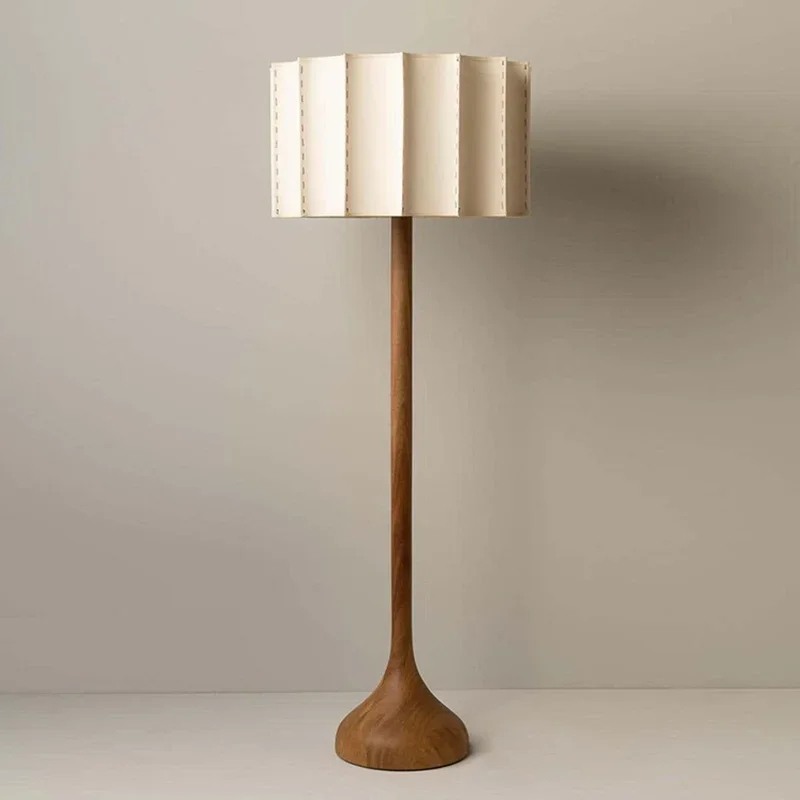
Start by identifying the activities that happen in your living room: conversation, reading, watching TV, playing games. Each activity benefits from different lighting approaches. For reading corners, position a floor or table lamp slightly behind and to the side of seating, allowing light to fall over the shoulder. For conversation areas, create balanced lighting with matching table lamps at either end of a sofa, or flank a fireplace with complementary vintage sconces.
The concept of “triangulating” light transforms a living room from flat to dimensional. Aim to have light sources at different heights—perhaps a floor lamp in one corner, table lamps at mid-level, and a pendant or ceiling fixture above—to create a full, layered effect that eliminates harsh shadows and creates depth.
Retro arc lamps work particularly well to define conversation areas, as their curved design allows light to be positioned directly over seating while keeping the base tucked behind furniture. This creates a sense of enclosure that enhances coziness.
For larger living spaces, use vintage lighting to create distinct zones that serve different purposes. A pair of matching table lamps on a console can define an entry area, while a statement floor lamp can anchor a reading nook in another part of the room. This zoning technique makes large spaces feel more intimate and purposeful.
The Science of Cozy: Choosing the Right Bulbs for Vintage Lamps
The most beautiful vintage lamp can fail to create a cozy atmosphere if paired with the wrong light bulb. The color temperature of your bulb—measured in Kelvins—dramatically impacts the mood of your space.
For maximum coziness, select bulbs in the warm white range (2700K-3000K), which cast a soft, amber glow similar to traditional incandescent bulbs. Anything above 3500K will create a cooler, bluer light that feels more clinical than cozy, regardless of how charming your vintage lamp base might be.
Many vintage enthusiasts love Edison-style filament bulbs for their warm glow and decorative appeal, especially in lamps where the bulb is visible. These bulbs typically produce light around 2200K-2400K—even warmer than standard incandescents—creating an extremely cozy amber glow. However, traditional Edison bulbs can be energy inefficient.
Fortunately, modern LED technology offers the best of both worlds. LED Edison-style bulbs provide the same aesthetic appeal and warm color temperature while using a fraction of the energy. For vintage lamps with shades that hide the bulb, standard LED bulbs in warm white tones provide energy-efficient illumination without sacrificing ambiance.
Dimmable arc floor lamps offer excellent flexibility, allowing you to adjust light levels throughout the day or for different activities. When retrofitting vintage lamps for dimming capability, consult with an electrician to ensure compatibility between your lamp’s wiring, the dimmer switch, and the bulb type.
Styling Tips: Integrating Vintage Lamps with Your Existing Decor
Incorporating vintage lamps into your living room doesn’t require a complete design overhaul. These characterful pieces often work best as counterpoints to your existing decor, adding visual interest through thoughtful contrast.
Balance old with new: A sleek contemporary sofa pairs beautifully with a characterful vintage table lamp. The contrast creates tension that makes both pieces more interesting.
Connect through color: Look for vintage lamps with elements that pick up colors already present in your room. A lamp with a brass base might echo picture frames or hardware elsewhere in the space.
Consider scale: In smaller rooms, choose more petite vintage lighting options that won’t overwhelm the space. Larger rooms can handle more substantial pieces like oversized floor lamps or dramatic table lamps.
Mind your shade: The lampshade dramatically affects how a vintage lamp fits into your decor. Replacing an outdated shade with a simple drum or empire shade in a neutral fabric can modernize a vintage base while preserving its character.
Create collections: Small groupings of three vintage accent lamps on a mantel or console create more impact than scattered single pieces. Look for a connecting element—similar colors, materials, or eras—to unify the collection.
Vintage arc lamps enhance the comfort of a space not just through their light but through their sculptural presence. These statement pieces can serve as room anchors that help define the style direction of your entire living space.
Material Matters: Understanding Vintage Lamp Components
The materials used in vintage lamps contribute significantly to their character and longevity. Understanding these materials helps you not only appreciate their craftsmanship but also care for them properly.
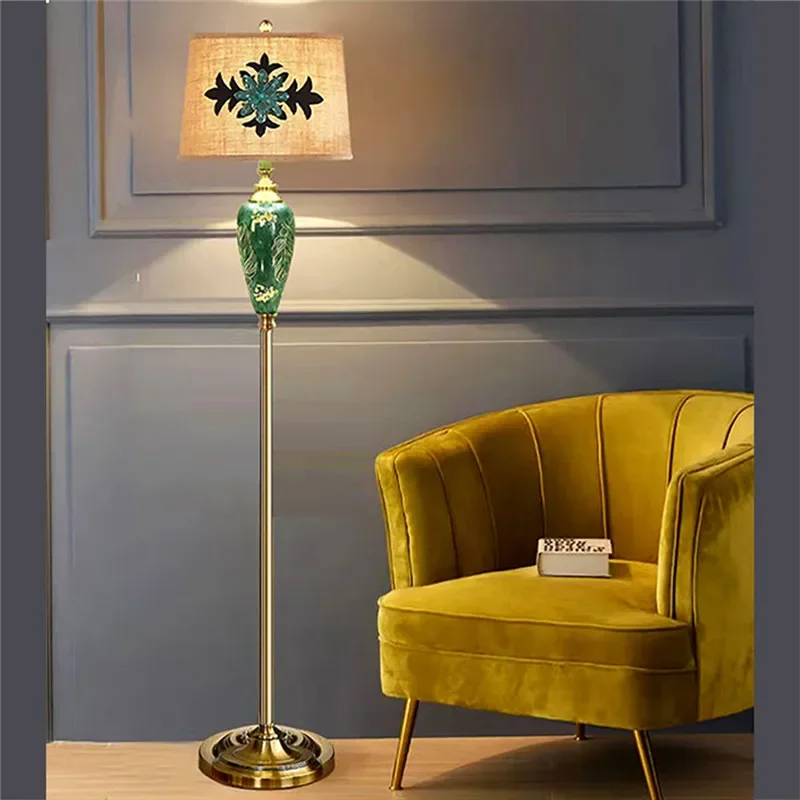
Brass is perhaps the most common metal found in vintage lamp bases, prized for its warm golden tone and durability. Over time, brass develops a patina that many collectors value. If you prefer a shinier look, gentle polishing with brass-specific products can restore its luster, but many enthusiasts prefer the character that comes with age.
Ceramic bases range from simple glazed forms to elaborate hand-painted designs. These pieces are generally sturdy but should be handled carefully as they can chip or crack if dropped. Clean ceramic bases with a soft, damp cloth rather than harsh chemicals that might damage painted details or glazes.
Bronze arc floor lamps offer exceptional durability with a distinctive aged finish that deepens over time. True bronze has a substantial weight and a slightly reddish-brown undertone compared to brass or copper.
Lampshades greatly influence both the quality of light and the lamp’s overall appearance. Vintage silk shades have a luxurious appearance but are vulnerable to sun damage and deterioration. Glass shades, particularly hand-painted or stained glass varieties, create colorful light patterns but require careful handling during cleaning. Parchment and paper shades from mid-century lamps often become brittle with age and may need professional replacement to maintain the lamp’s authentic look.
When evaluating a vintage lamp’s condition, check for:
– Stable bases without wobbling
– Original switches that operate smoothly (or evidence of safe rewiring)
– Straight harps (the metal component that holds the shade)
– Even patination rather than spotty discoloration
– Original finials (the decorative cap that secures the shade)
Where to Source Authentic Vintage Lamps for Your Living Room
Finding the perfect vintage lamp for your cozy living room can be an adventure in itself. Each source has its own advantages and considerations:
Antique Shops and Specialty Boutiques
These curated shops often offer higher-quality, properly restored pieces with knowledgeable staff who can explain the history and provenance of each lamp. While prices are typically higher than other sources, you’re paying for expertise, authenticity verification, and pieces that are ready to use safely. Expect to pay $150-500+ for quality vintage table lamps and $250-1000+ for significant floor lamps.
Estate Sales and Auctions
These events offer the excitement of discovery and often better prices than retail settings. Look for estate sales in older, established neighborhoods for the best finds. Arrive early for the best selection, and bring cash for negotiating power. Thoroughly examine any lamp before purchasing, as these venues rarely offer returns.
Flea Markets and Antique Fairs
These gatherings of multiple vendors create one-stop shopping for comparing styles and prices. The selection varies widely from rough “as-found” pieces needing restoration to ready-to-use lamps. Negotiation is expected, and building relationships with regular vendors can lead to them saving special pieces for you.
Online Marketplaces
Sites like Etsy, eBay, and specialty vintage platforms offer vast selection but require careful evaluation of both the item and seller. Look for listings with multiple clear photos, detailed descriptions of any flaws, and explicit confirmation of working electrical components. Factor shipping costs into your budget, and ask about packing methods for fragile items.
Thrift Stores and Consignment Shops
These budget-friendly options require frequent visits and quick decision-making as inventory changes rapidly. While most pieces will need some refurbishment, prices are typically the lowest of all sources. Look beyond current appearance to focus on good bones—quality materials and interesting shapes that can shine with cleaning and a new shade.
Adjustable Arc Floor Lamp, Bronze Arc Floor Lamp
Price range: $440.95 through $558.52 Select options This product has multiple variants. The options may be chosen on the product pageMid-Century Arc Floor Lamp, Wood Arc Floor Lamp
$230.86 Select options This product has multiple variants. The options may be chosen on the product pageVintage Arc Floor Lamp, Wood Arc Floor Lamp
Price range: $603.87 through $1,346.09 Select options This product has multiple variants. The options may be chosen on the product page3 Light Arc Floor Lamp, Dimmable Arc Floor Lamp
Price range: $162.86 through $246.50 Select options This product has multiple variants. The options may be chosen on the product pageBlack Arc Floor Lamp, Mid-Century Arc Floor Lamp, Rattan Arc Floor Lamp, Wood Arc Floor Lamp
$963.46 Select options This product has multiple variants. The options may be chosen on the product pageChrome Arc Floor Lamp, Dimmable Arc Floor Lamp, Gold Arc Floor Lamp, LED Arc Floor Lamp
Price range: $623.49 through $2,417.47 Select options This product has multiple variants. The options may be chosen on the product page
Important Safety and Renovation Considerations
Q: How do I know if a vintage lamp needs rewiring?
A: Inspect the cord for cracks, brittleness, or exposed wires. If the cord feels stiff rather than flexible, shows discoloration, or has a fabric covering that’s fraying, rewiring is necessary for safety. Similarly, if the socket is damaged, corroded, or doesn’t function smoothly, it should be replaced.
Q: Can I rewire a vintage lamp myself?
A: While basic rewiring is within the capabilities of someone comfortable with DIY projects, it’s often worth the $40-75 that a professional lamp shop might charge. They can ensure proper grounding and UL-compliance while preserving the lamp’s vintage character. For valuable or complex lamps, professional restoration is strongly recommended.
Q: Are vintage lamps compatible with modern electrical systems?
A: Most vintage lamps can be safely used with modern electrical systems once properly rewired with contemporary components. A complete arc floor lamp guide can help you understand important features to look for, including proper polarization and grounding for maximum safety.
Q: How can I tell if a vintage lamp is authentic?
A: Examine the construction methods—hand-soldered joints, solid materials with substantial weight, and signs of age like patina or wear consistent with the purported era are good indicators. Research makers’ marks, which are often found on the base underside or socket. Inconsistent materials or construction methods between different parts of the lamp may indicate a “marriage” of components from different pieces.
Supplementary Content: Frequently Asked Questions About Vintage Lamps
Q: How can I tell if my lamp is genuinely vintage?
A: Look for signs of age-appropriate wear, materials that were common in the era (like Bakelite in Art Deco pieces), and construction methods like hand-soldering rather than modern machine assembly. Weight is often a good indicator—vintage lamps typically use heavier materials than modern reproductions.
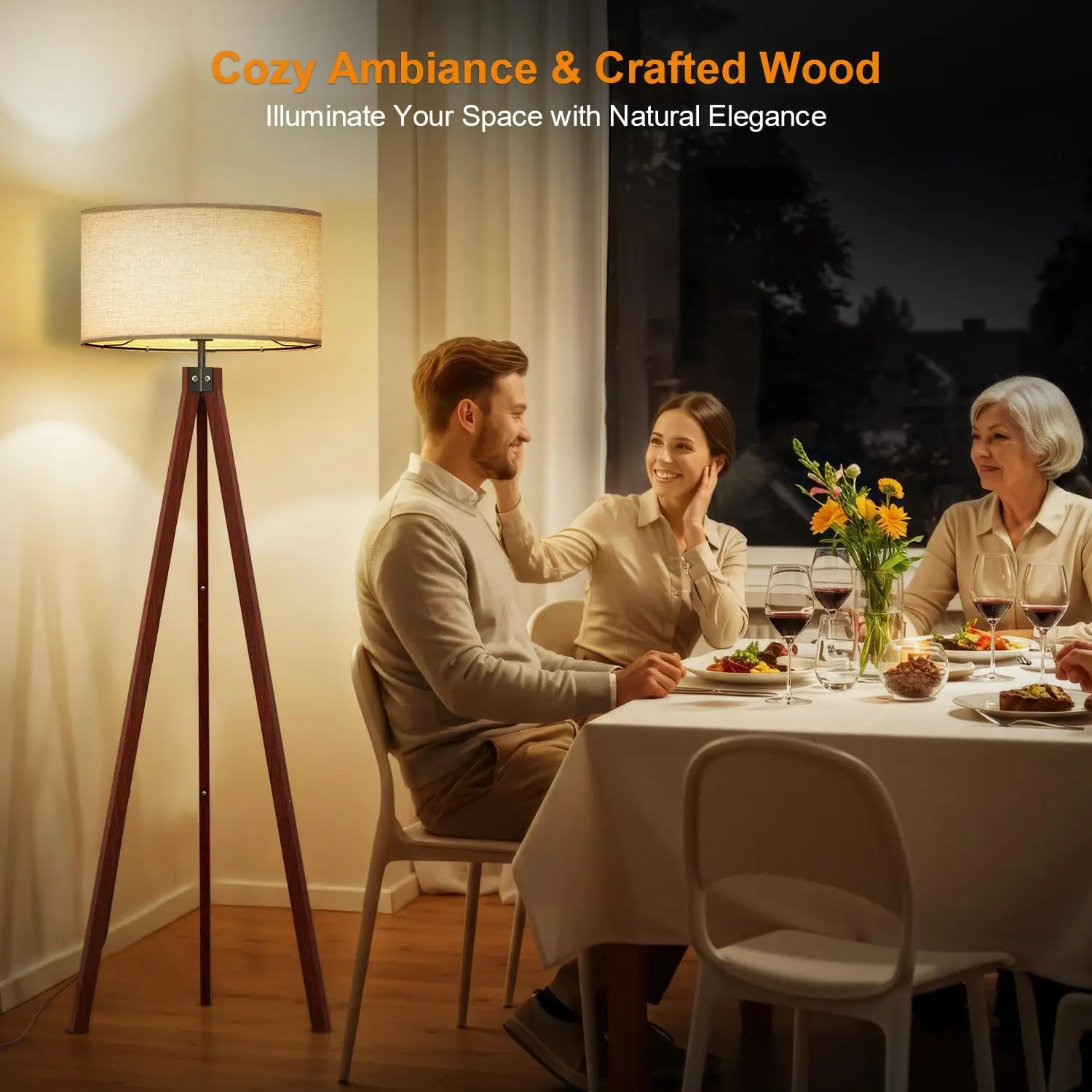
Q: What’s the best height for a vintage table lamp?
A: When seated beside the lamp, the bottom of the shade should be at approximately eye level (usually 16-18 inches above the table surface) to avoid glare while providing effective light for reading. Overall lamp height generally works best between 26-32 inches for most living room settings.
Q: How do I clean a brass vintage lamp base without damaging the patina?
A: For gentle cleaning that preserves patina, mix equal parts white vinegar and water, and wipe the surface with a soft cloth dampened in the solution. Avoid commercial brass cleaners if you wish to maintain the aged appearance, as these will remove the patina that collectors value.
Q: Can I use smart bulbs in vintage lamps?
A: Yes, most smart bulbs will work in vintage lamps that have been properly rewired, allowing you to adjust brightness and even color temperature using your smartphone or voice assistant. Make sure the bulb’s physical size fits appropriately within your vintage fixture.
Creating a Cohesive Collection: When One Vintage Lamp Leads to More
Starting a collection of vintage lamps often begins with a single piece that captures your heart. That first lamp sets the tone, but expanding your collection doesn’t mean searching for identical matches. Instead, look for complementary pieces that share some common element—perhaps material, era, or design motif—while still bringing something new to your space.
Interior designers often recommend the “rule of three” when displaying collections, suggesting that grouping similar items in odd numbers creates more visual interest than even-numbered groupings. Three table lamps of varying heights but similar style on a console table makes a stronger statement than two matching lamps.
When incorporating multiple vintage lamps in one room, consider how they relate not just to each other but to the room’s other light sources. A mix of top styles vintage arc lamps with more traditional table lamps creates a layered lighting scheme that offers both practical illumination and visual interest.
Remember that more isn’t always better—there’s a fine line between a curated collection and visual clutter. Each lamp should serve both a practical purpose and an aesthetic one. If a space begins to feel overwhelmed by too many statement pieces, consider rotating your collection seasonally to enjoy different pieces throughout the year.
How Vintage Lamps Compare to Modern Reproductions
The market for “vintage-inspired” lighting has exploded in recent years, offering designs that mimic historical styles at various price points. Understanding the differences between authentic vintage pieces and modern reproductions helps you make choices aligned with your priorities.
Authentic vintage lamps typically feature heavier materials and more detailed craftsmanship than their modern counterparts. A genuine mid-century table lamp will often have a solid brass base with substantial weight, while a reproduction might use brass-plated lighter metal or even plastic components. This difference affects not just durability but also the lamp’s stability on your table.
The patina that develops on authentic vintage pieces cannot be perfectly replicated in mass production. While some high-end reproductions use artificial aging techniques, these lack the natural variation and depth that come from decades of gentle use.
Modern reproductions do offer some advantages, particularly in terms of electrical safety and energy efficiency. New lamps are built to current safety standards and often accommodate a wider range of bulb types. They may include features like integrated dimming or USB charging ports that vintage pieces lack.
For those concerned primarily with aesthetic impact rather than collecting value, high-quality reproductions from specialty manufacturers can offer a good compromise. Look for companies that specialize in specific eras and employ traditional materials rather than those producing budget versions with vinyl or plastic components.
At Interior Ivy, we understand the appeal of both authentic vintage pieces and quality reproductions that capture vintage charm while meeting modern safety standards. Our curated lighting collections offer options that bring timeless character to your cozy living space, whether you’re a dedicated vintage collector or simply someone who appreciates the warm glow and distinctive character that vintage-inspired lighting brings to a home.

